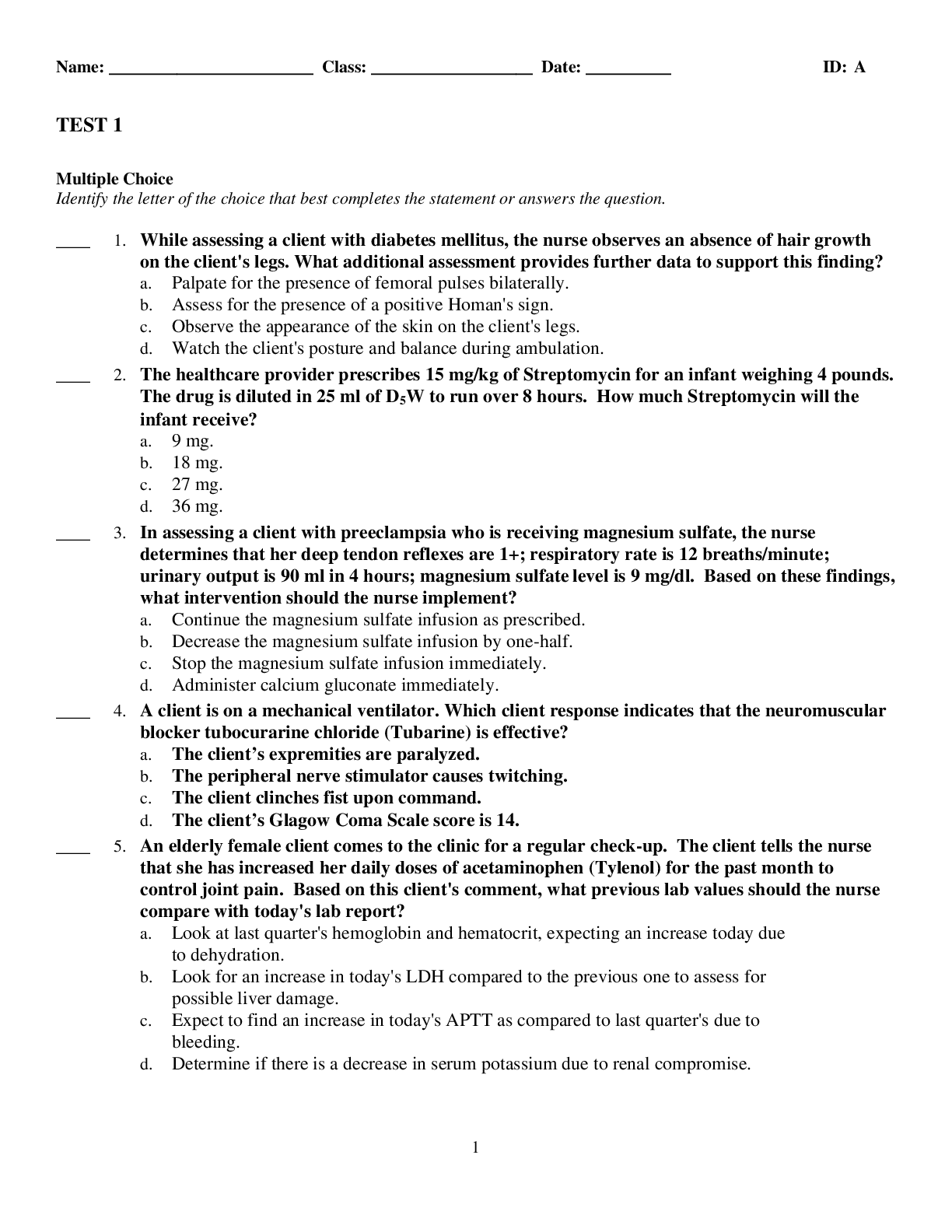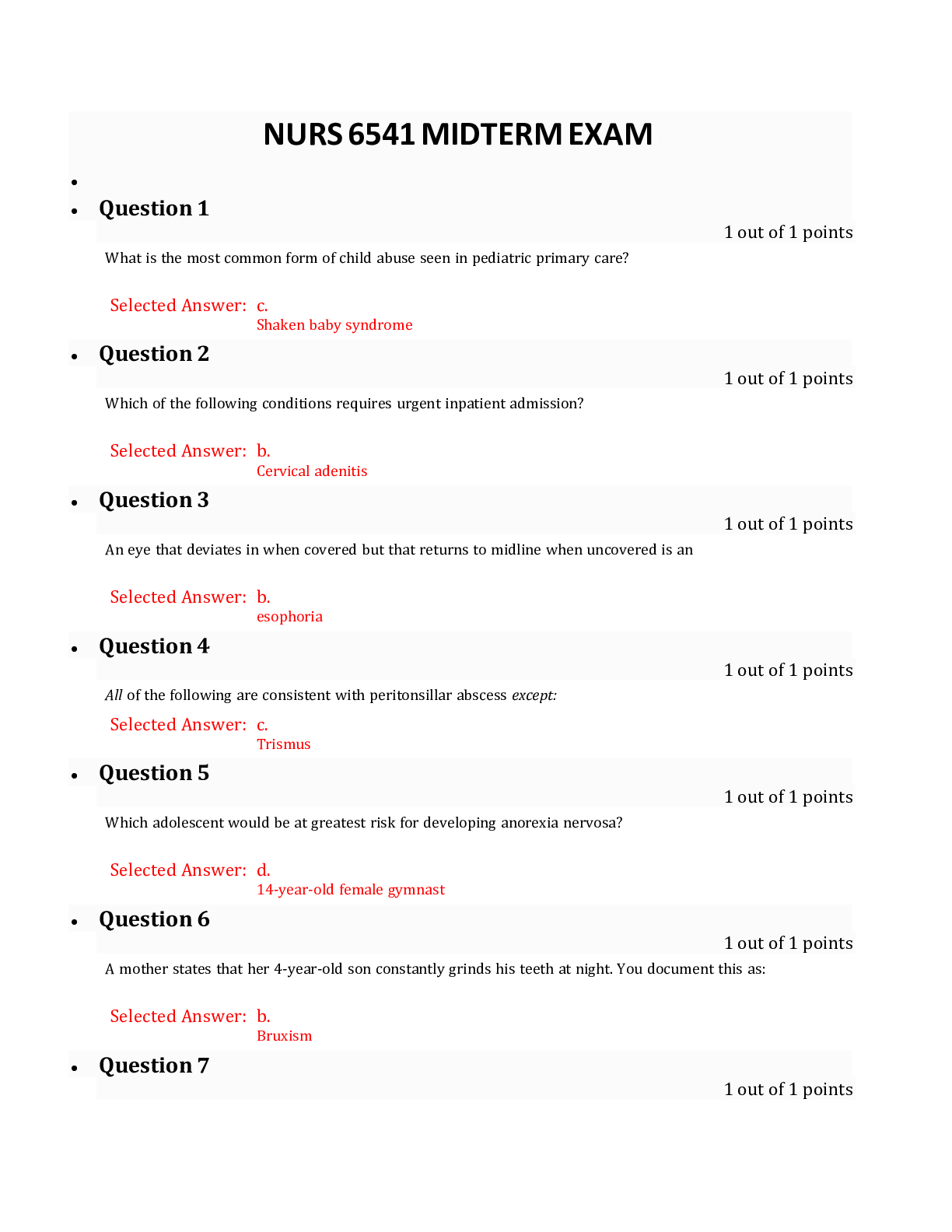c14 CNURSING 295 - Questions and Answers (Latest Version)
Document Content and Description Below
N295 ch 14 MULTIPLE CHOICE 1. When examining the eye, the nurse notices that the patient’s eyelid margins approximate completely. The nurse recognizes that this assessment finding: 2.... During ocular examinations, the nurse keeps in mind that movement of the extraocular muscles is: 3. The nurse is performing an external eye examination. Which statement regarding the outer layer of the eye is true? 4. When examining a patient’s eyes, the nurse recalls that stimulation of the sympathetic branch of the autonomic nervous system: 5. The nurse is reviewing causes of increased intraocular pressure. Which of these factors deter-mines intraocular pressure? 6. The nurse is conducting a visual examination. Which of these statements regarding visual pathways and visual fields is true? 7. The nurse is testing a patient’s visual accommodation, which refers to which action? 8. A patient has a normal pupillary light reflex. The nurse recognizes that this reflex indicates that: 9. A mother asks when her newborn infant’s eyesight will be developed. The nurse should reply: 10. The nurse is reviewing in age-related changes in the eye for a class. Which of these physiologic changes is responsible for presbyopia? 11. Which of these assessment findings would the nurse expect to see when examining the eyes of a black patient? 12. A 52-year-old patient describes the presence of occasional floaters or spots moving in front of his eyes. The nurse should: 13. The nurse is preparing to assess the visual acuity of a 16-year-old patient. How should the nurse proceed? 14. A patient’s vision is recorded as 20/30 when the Snellen eye chart is used. The nurse interprets these results to indicate that: 15. A patient is unable to read even the largest letters on the Snellen chart. The nurse should take which action next? 16. A patient’s vision is recorded as 20/80 in each eye. The nurse interprets this finding to mean that the patient: 17. When performing the corneal light reflex assessment, the nurse notes that the light is reflected at 2 o’clock in each eye. The nurse should: 18. The nurse is performing the diagnostic positions test. Normal findings would be which of these results? 19. During an assessment of the sclera of a black patient, the nurse would consider which of these an expected finding? 20. A 60-year-old man is at the clinic for an eye examination. The nurse suspects that he has ptosis of one eye. How should the nurse check for this? 21. During an examination of the eye, the nurse would expect what normal finding when assessing the lacrimal apparatus? 22. When assessing the pupillary light reflex, the nurse should use which technique? 23. The nurse is assessing a patient’s eyes for the accommodation response and would expect to see which normal finding? 24. In using the ophthalmoscope to assess a patient’s eyes, the nurse notices a red glow in the patient’s pupils. On the basis of this finding, the nurse would: 25. The nurse is examining a patient’s retina with an ophthalmoscope. Which finding is considered normal? 26. A 2-week-old infant can fixate on an object but cannot follow a light or bright toy. The nurse would: 27. The nurse is assessing color vision of a male child. Which statement is correct? The nurse should: 28. The nurse is performing an eye-screening clinic at a daycare center. When examining a 2-year-old child, the nurse suspects that the child has a “lazy eye” and should: 29. The nurse is performing an eye assessment on an 80-year-old patient. Which of these findings is considered abnormal? 30. The nurse notices the presence of periorbital edema when performing an eye assessment on a 70-year-old patient. The nurse should: 31. When a light is directed across the iris of a patient’s eye from the temporal side, the nurse is assessing for: 32. In a patient who has anisocoria, the nurse would expect to observe: 33. A patient comes to the emergency department after a boxing match, and his left eye is swollen almost shut. He has bruises on his face and neck. He says he is worried because he “can’t see well” from his left eye. The physician suspects retinal damage. The nurse recognizes that signs of retinal detachment include: 34. A patient comes into the clinic complaining of pain in her right eye. On examination, the nurse sees a pustule at the lid margin that is painful to touch, red, and swollen. The nurse recognizes that this is a: 35. A 68-year-old woman is in the eye clinic for a checkup. She tells the nurse that she has been having trouble reading the paper, sewing, and even seeing the faces of her grandchildren. On examination, the nurse notes that she has some loss of central vision but her peripheral vision is normal. These findings suggest that she may have: 36. A patient comes into the emergency department after an accident at work. A machine blew dust into his eyes, and he was not wearing safety glasses. The nurse examines his corneas by shining a light from the side across the cornea. What findings would suggest that he has suffered a corneal abrasion? 37. An ophthalmic examination reveals papilledema. The nurse is aware that this finding indicates: 38. During a physical education class, a student is hit in the eye with the end of a baseball bat. When examined in the emergency department, the nurse notices the presence of blood in the anterior chamber of the eye. This finding indicates the presence of: 39. During an assessment, the nurse notices that an older adult patient has tears rolling down his face from his left eye. Closer examination shows that the lower lid is loose and rolling outward. The patient complains of his eye feeling “dry and itchy.” Which action by the nurse is correct? MULTIPLE RESPONSE 1. During an examination, a patient states that she was diagnosed with open-angle glaucoma 2 years ago. The nurse assesses for characteristics of open-angle glaucoma. Which of these are character-istics of open-angle glaucoma? Select all that apply. [Show More]
Last updated: 1 year ago
Preview 1 out of 13 pages
Instant download
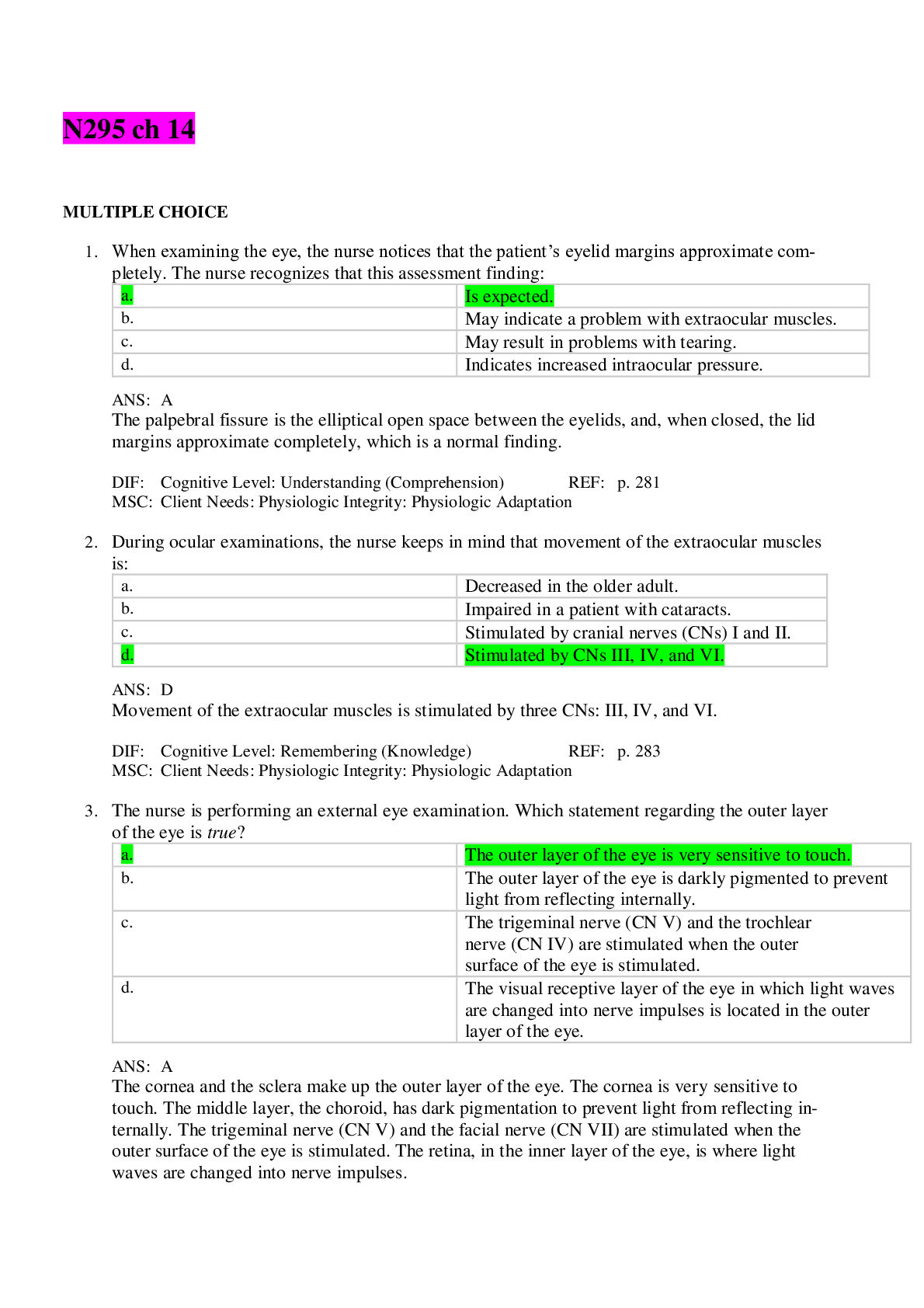
Buy this document to get the full access instantly
Instant Download Access after purchase
Add to cartInstant download
Also available in bundle (1)

CNURSING 295
CHAPTER 23 NEUROLOGIC SYSTEM,CHAPTER 21 ABDOMINAL ASSESSMENT,N295 EXAM 4,N295 EXAM 3,c22,c21,c19,c18,c17,c16,c15,c14,c13,c12,c11,c10,c9,c8,c7,c6,c5,c4,c2,c1
By Ajay25 3 years ago
$75
24
Reviews( 0 )
Document information
Connected school, study & course
About the document
Uploaded On
Jan 17, 2021
Number of pages
13
Written in
Additional information
This document has been written for:
Uploaded
Jan 17, 2021
Downloads
0
Views
63


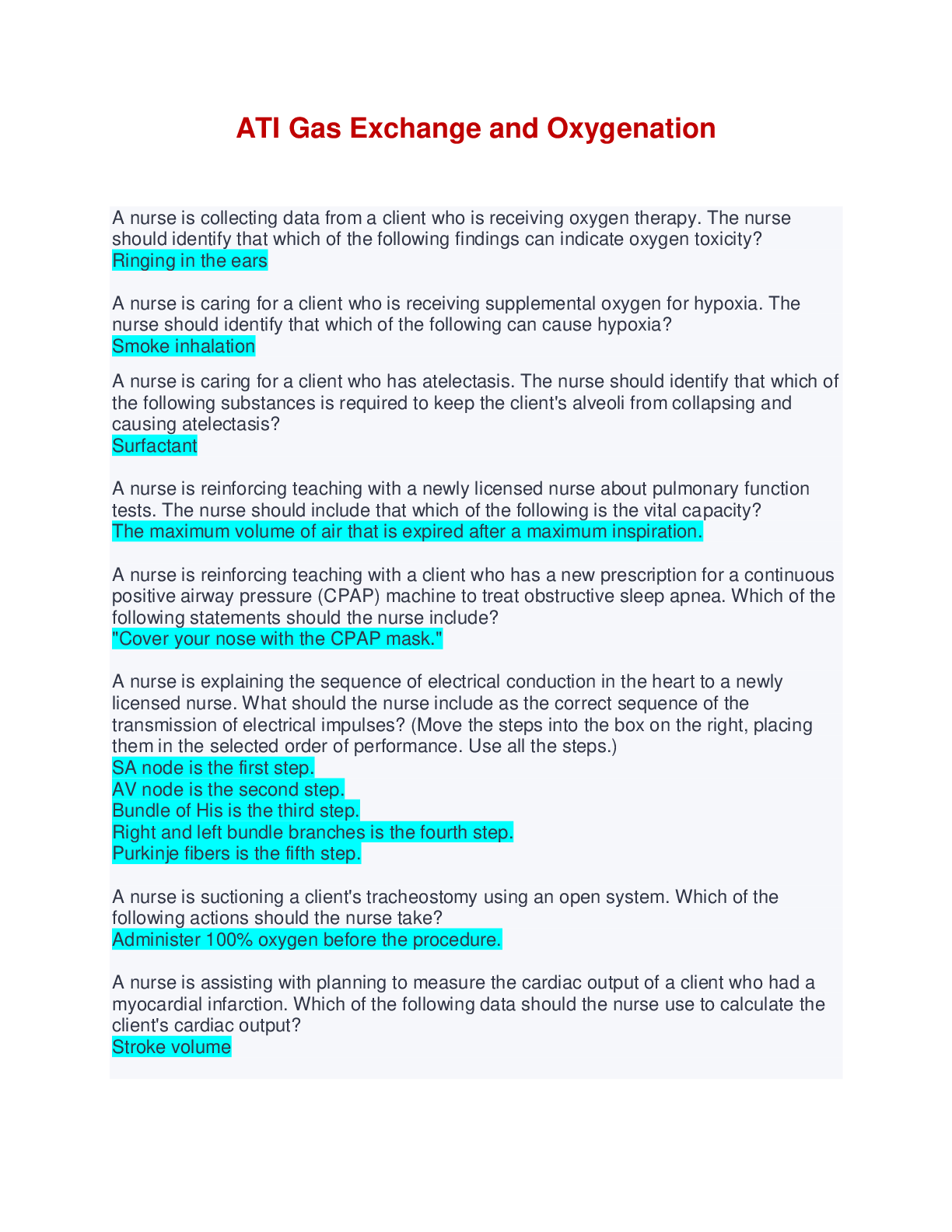






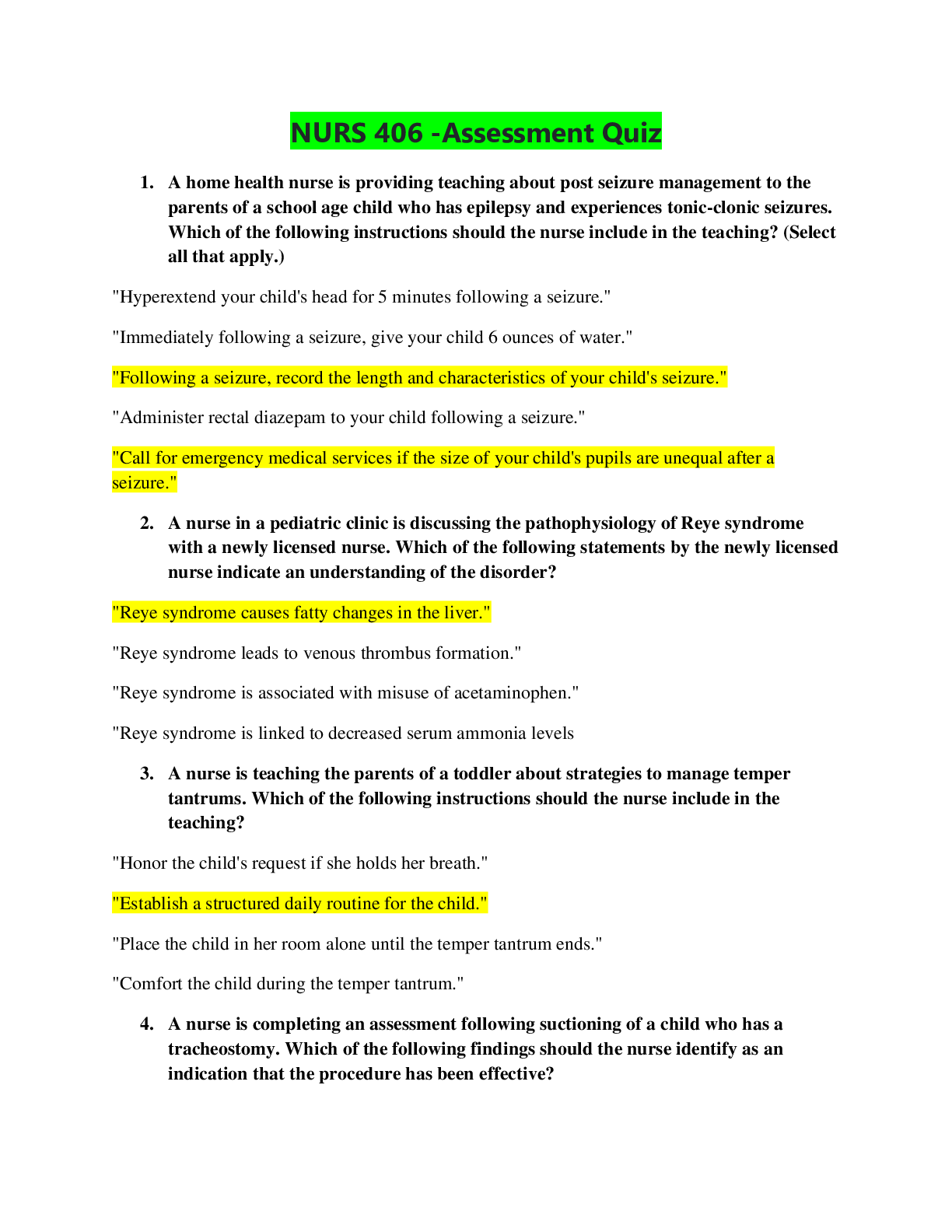



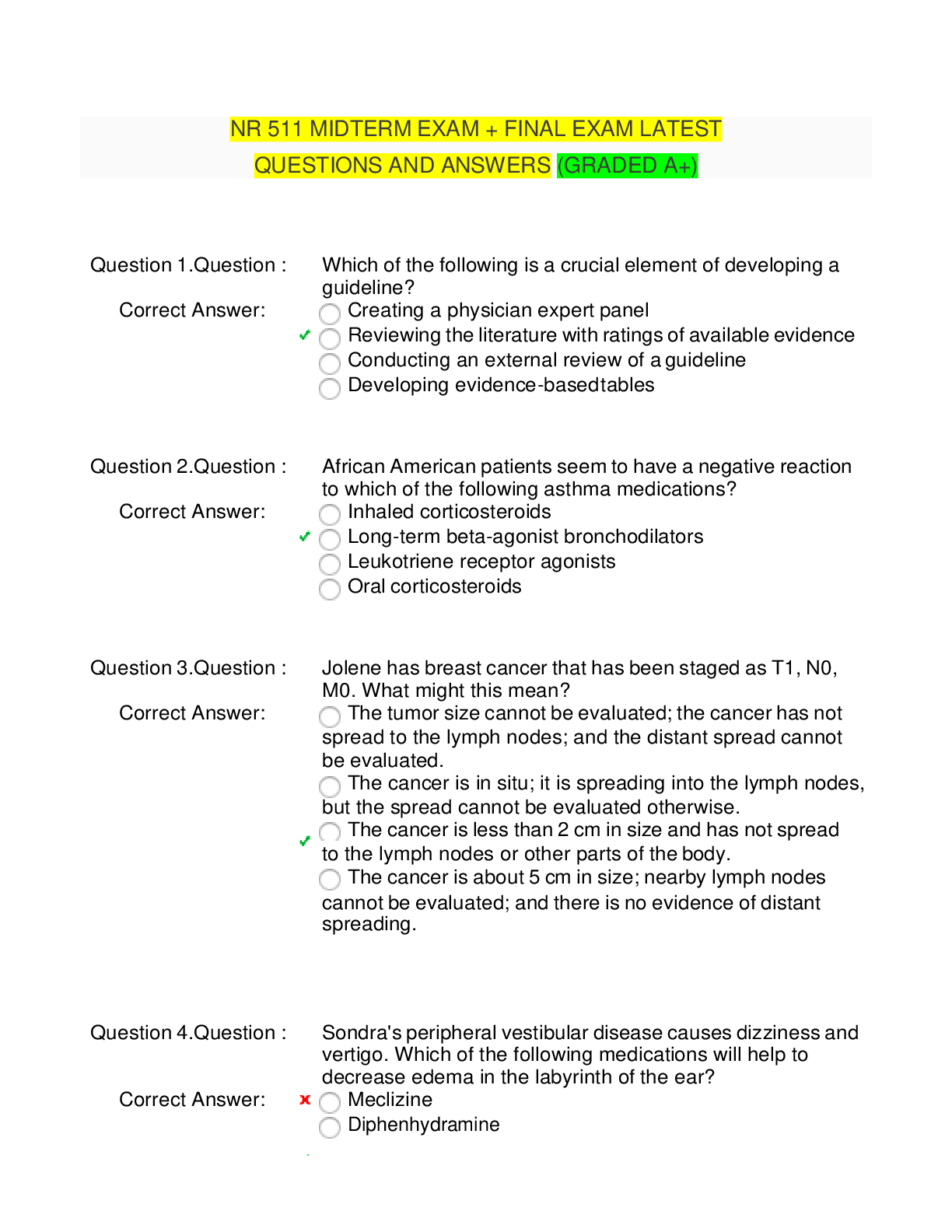

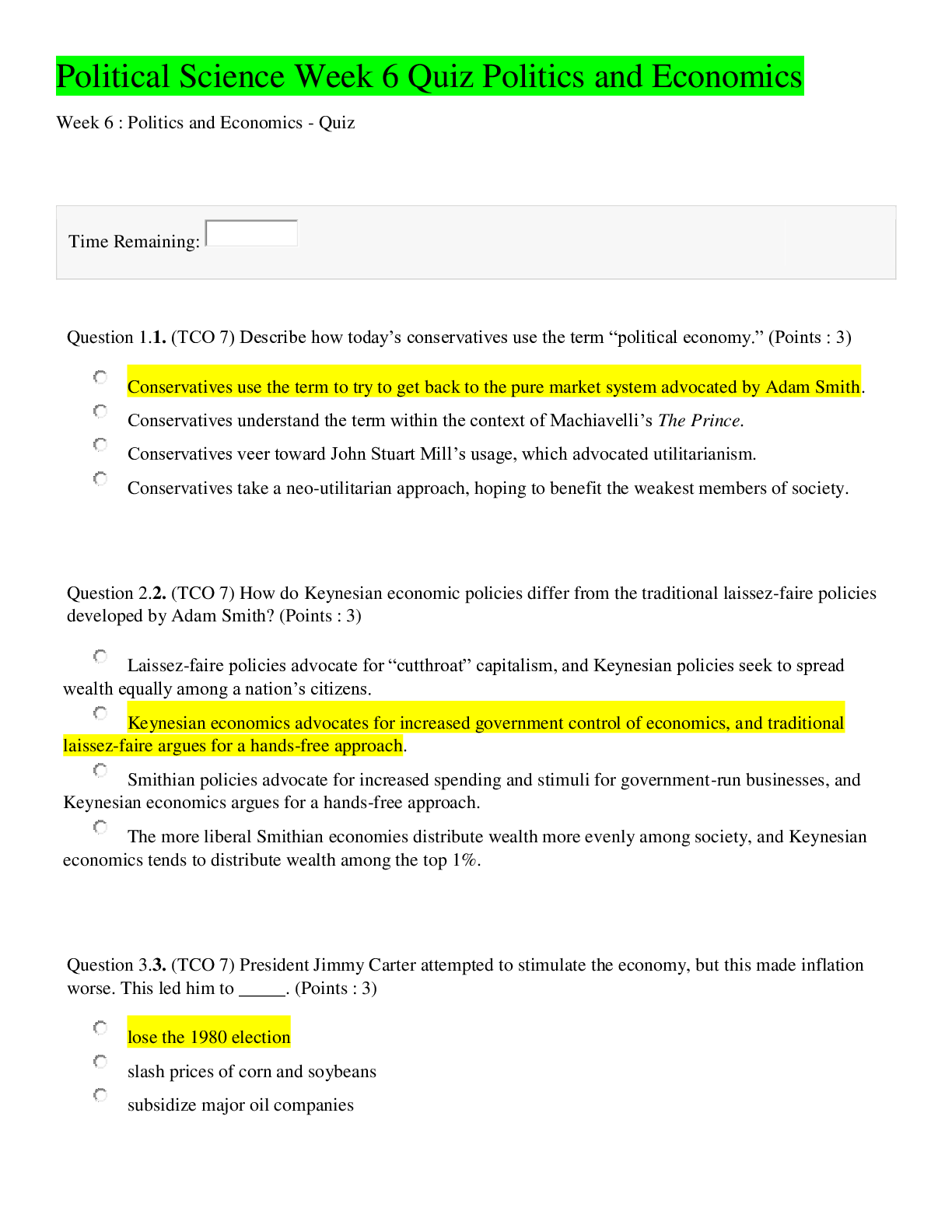
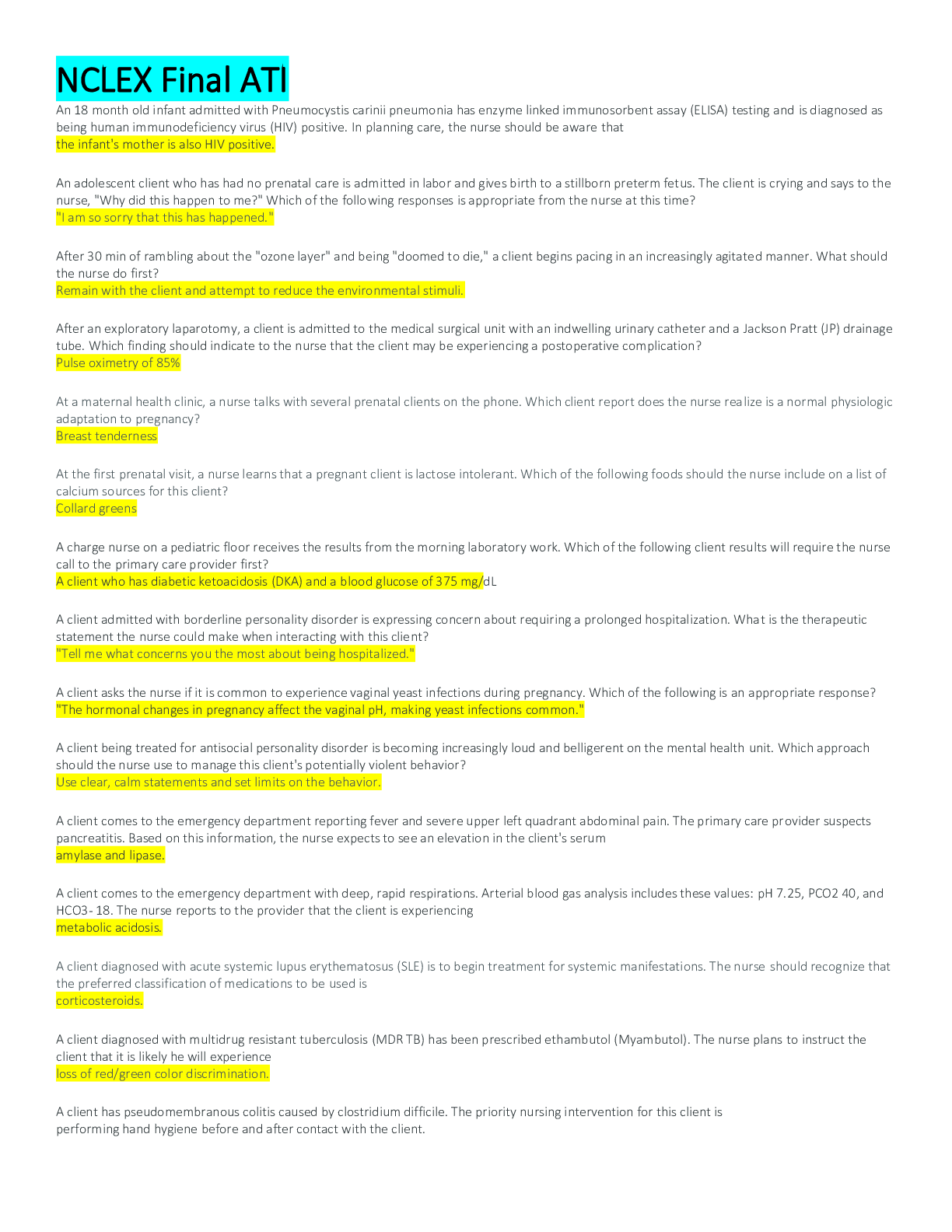
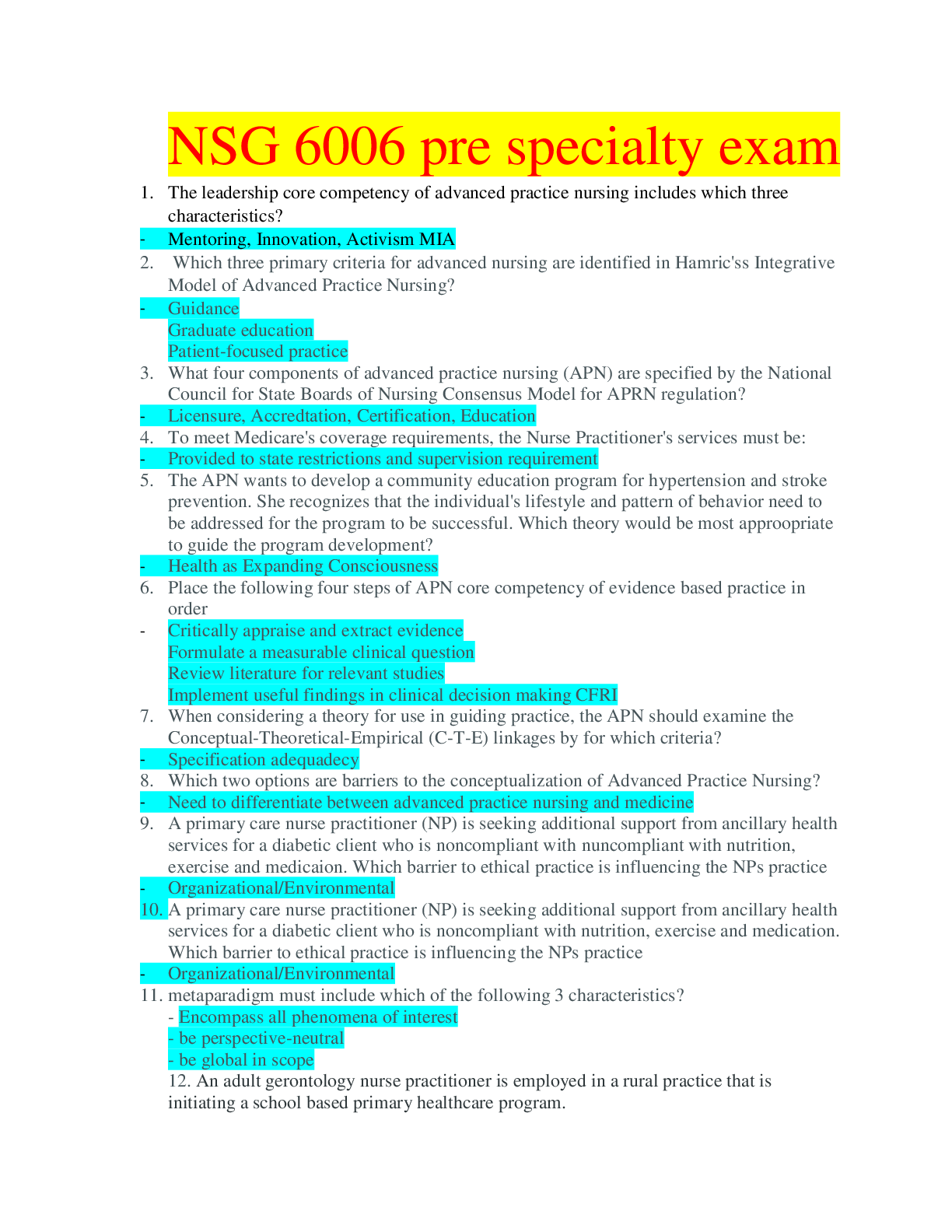
.png)
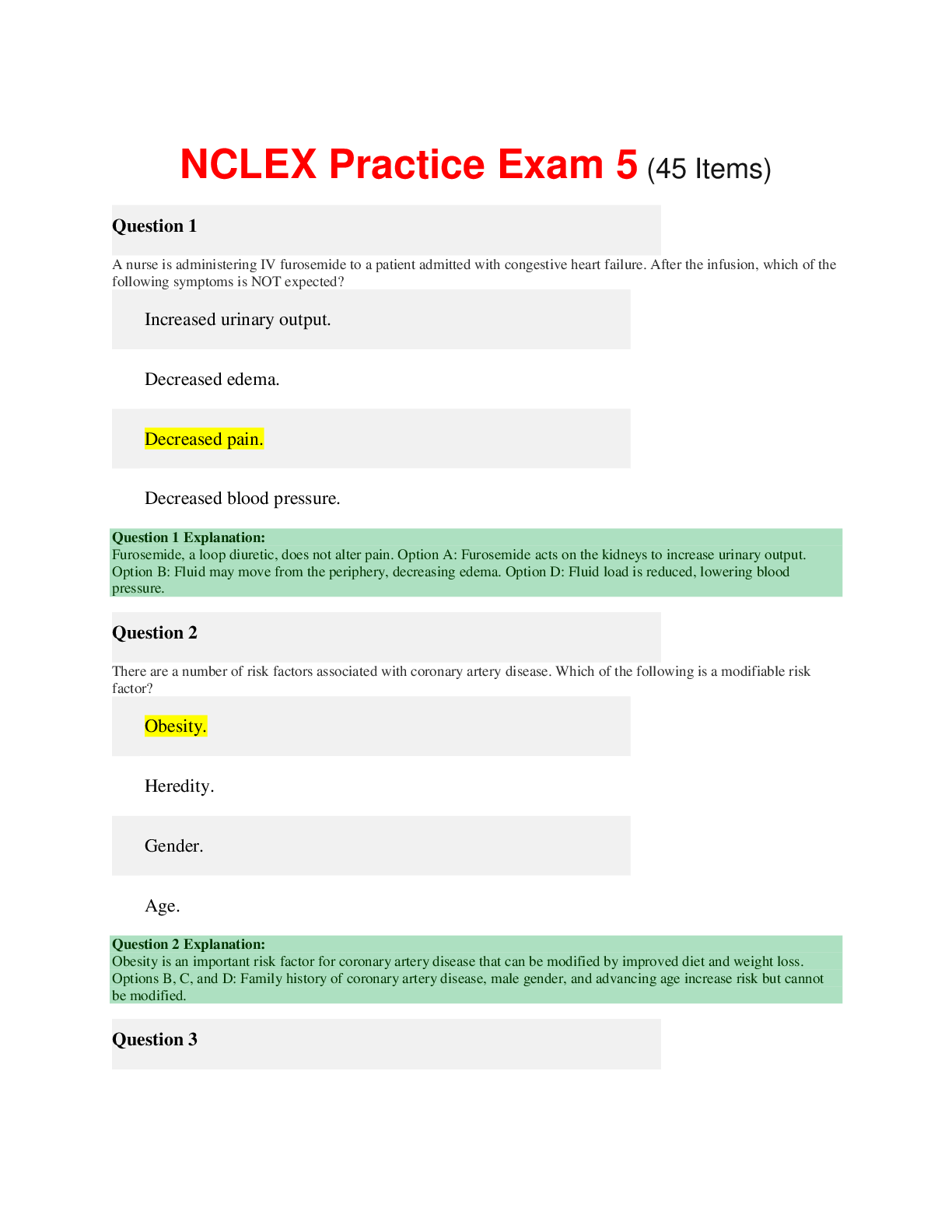
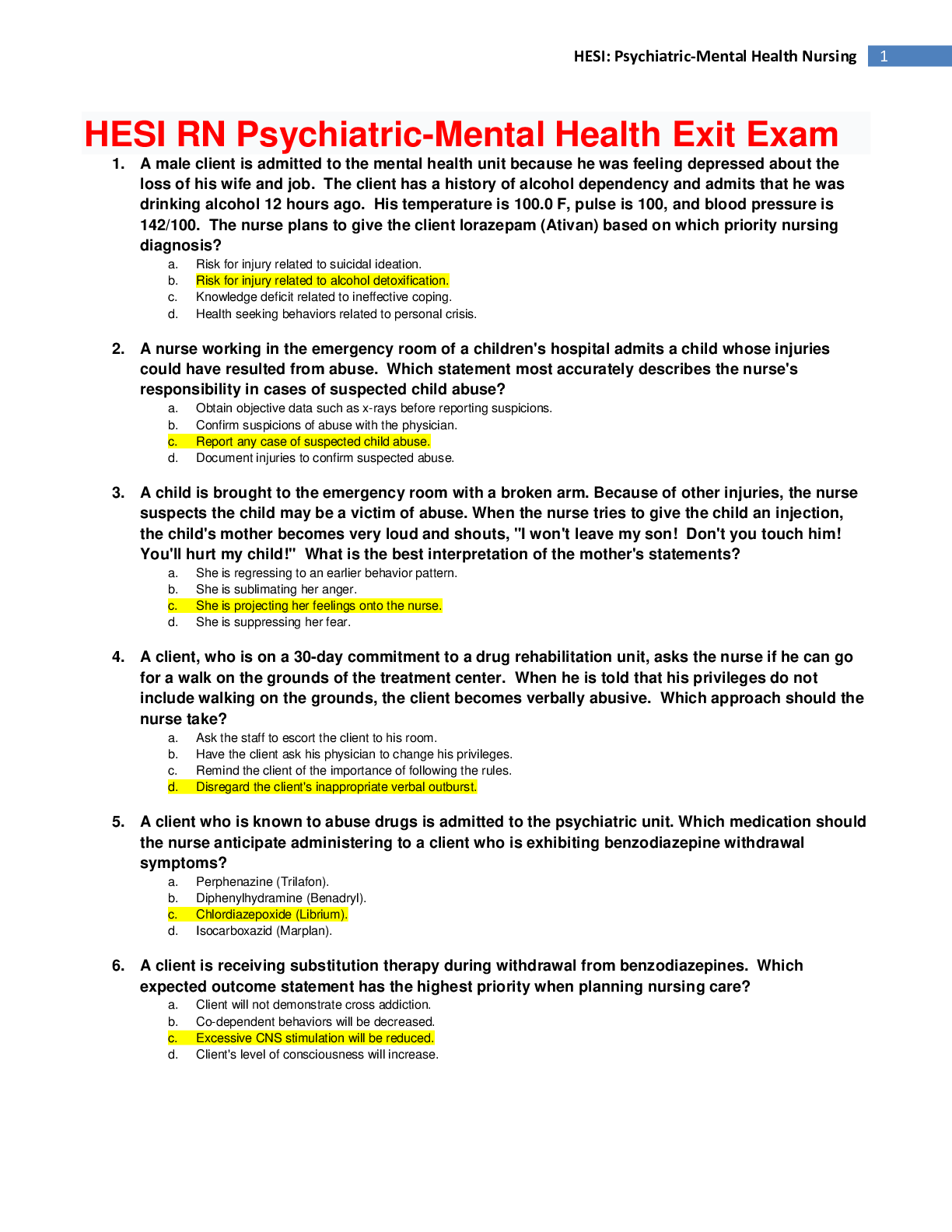
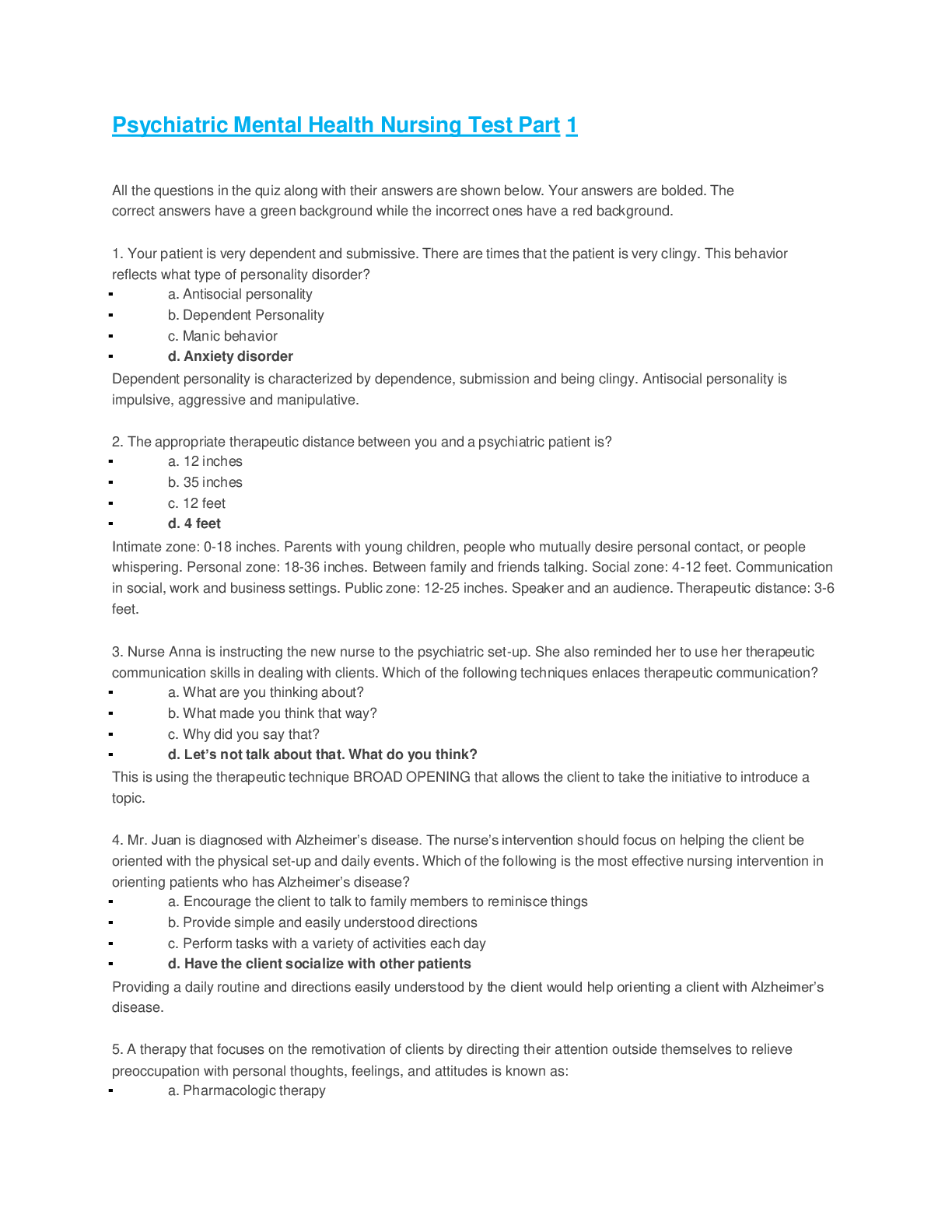
 – South university Savannah.png)
